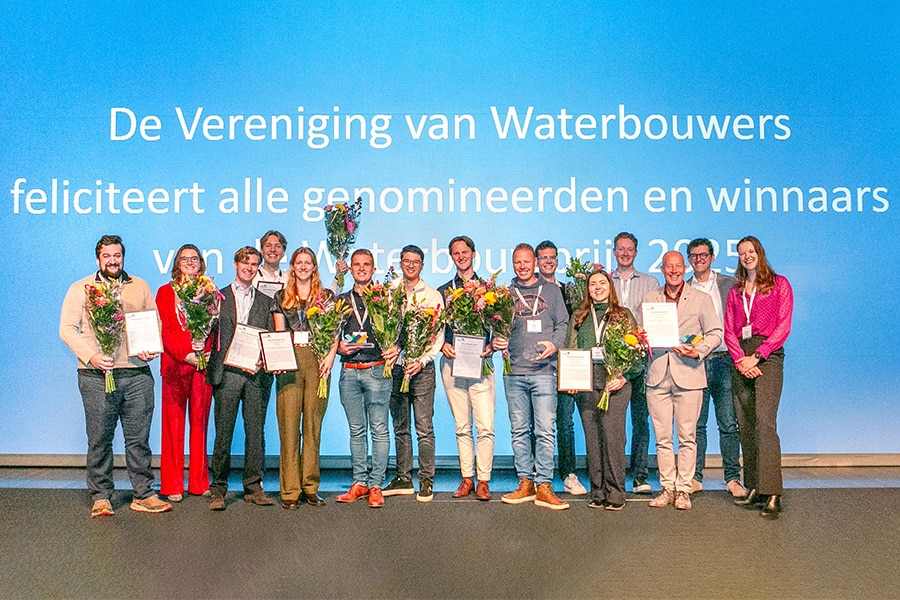
Innovative infiltration gutter in downtown Berlicum (NB)
April last year, work started in Berlicum (municipality of Sint-Michielsgestel) on the realization of the redesign of the Mercuriusplein. A square with many functions such as: parking, shopping, staying, weekly markets and events. The municipality is actively promoting and implementing climate adaptive solutions. The Mercuriusplein in Berlicum proves that it is not at all bad if you see bears on the road, on the contrary!
WHY INFILTRATE
The climate is changing and the effects of climate change are everywhere. Heavy rainfall and longer periods of drought require sustainable water management. "During a visit to the Climate Trade Fair in Houten two years ago, I was introduced to the ACO infiltration gutter," says Fred Knibbeler of Dolmans Landscaping Group. "We focus on circular and innovative solutions, which is why the infiltration gutter appealed to me immediately! It captures rainwater and infiltrates it locally, high on the surface, into the soil. This prevents the soil from drying out and relieves the sewer system. I immediately saw the possibilities of this system and it turned out to be the solution for the Mercuriusplein in Berlicum." This created a win-win situation for village, people and nature!
OPERATION OF THE ACO INFILTRATION FLUME
The infiltration gutter is available in stainless steel or Corten steel and features bottom outlets that connect to infiltration wicks in the soil. "These wicks consist of environmentally friendly and fully circular rock wool. The number of under spouts/longs is determined based on the design requirements and the permeability of the soil (K-value)," explains Kees-Willem Kamp, sales engineer at ACO, who supervised this project from start to finish. "To protect the infiltration slabs and subsoil from contamination, the channel bottom is also fitted with filter elements made of circular stone wool. Once installed in the ground, the wicks ensure that rainwater is infiltrated into the soil and gradually released here. This prevents the soil from drying out and relieves the sewer system during rainstorms."

APPLICATION TO MERCURY SQUARE
During the design phase of Mercury Square, it was decided not to disconnect stormwater from the part where the weekly market is held to the infiltration gutter. This in connection with the degree of pollution. Therefore, there is a normal ACO ExoDrain that discharges into the waste water drain. The remaining rainwater from approximately 4500 m2 paved surface does get collected in the infiltration flume and infiltrated into the soil. "To do this in a controlled manner, the system is compartmentalized so that water does not all flow to one point, but is released to the ground in a controlled manner. The infiltration gutter system is equipped with overflows in several places and additional storage in the form of a water-storage foundation under the parking lot's paving. In this way, flooding and possible damage are prevented at all times, even during heavy peak showers," explains Fred Knibbeler.
QUICK INSTALLATION
Thanks to the unique ExoDrain construction, the infiltration channel does not require a concrete foundation or further lateral backfilling with concrete (Type-I according to NEN-EN1433) to meet the required traffic class D400. The only prerequisite is a sufficiently load-bearing subsoil, with sufficient water permeability. It is therefore recommended to install the gutters using a concrete leveling layer. Holes with a diameter of 25 cm, for the purpose of the infiltration slabs, can be realized by means of soil suction, a machine auger or pile shovel. The infiltration slabs with a length of 1200 mm and cross-section of 150×200 mm are then inserted into the holes. Hollow spaces are filled with gravel. The infiltration channel is placed over these infiltration slabs. The infiltration slabs at Mercury Square are centered two meters apart.
GRILLE COVER WITH BEAR MOTIF
Like any grating gutter, the infiltration gutter can be fitted with custom designed cast iron or Corten steel gratings. This option was fully utilized for this project. The motif in the gratings was designed by Susanne Dohmeier of Dolmans Landscaping Group: "When designing, I tried to make a link with the past and bring back something unique from Berlicum on Mercuriusplein, also known as the 'living room' of the village. The bear comes from the old coat of arms of Berlicum. I abstracted this and used it to create a motif in which large and small bears alternate." The unique look adds to the identity of the square and gives drainage a face of its own. In addition, the bear motif is also very positively appreciated by the residents!
MAINTENANCE
Of course, the system must be inspectable and cleanable. Periodically, the infiltration channel will have to be checked for fouling and functionality. In case of diminishing function, the horizontally mounted filter elements are replaced. This can be done very easily after the grids are removed. The infiltration lumps require no further maintenance.
This infiltration channel fits into any design. This makes sustainable water management possible in every village and town.

![[Vacancy] Civil Advisor at Spaarnelanden 3](https://gww-bouw.nl/wp-content/uploads/2025/12/Naamloos-2-kopie.jpg)


